Faster connections, reduced road traffic and lower environmental impact are some of the benefits electric vertical take-off and landing (eVTOL) aircraft could offer to cities. However, these gains will only be realised if suitable facilities – vertiports – can be developed in the right locations. Of course, that is not as simple as it might sound.
Land, water or on existing structures are the three options available for locating vertiports, but whichever option is chosen, the perfect site does not readily exist. The main challenge is that vertiports are designed to be built and integrated into existing urban environments. However, with careful consideration, the risks relating to city locations can be mitigated at the planning stage.
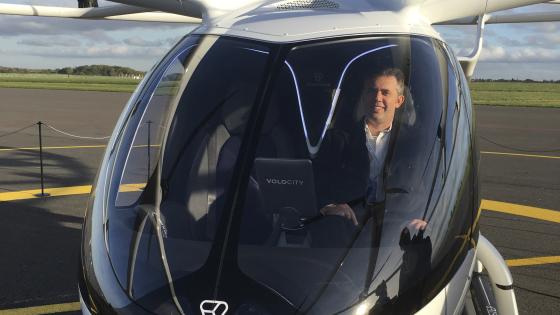
John Reavy is Mott MacDonald’s principal account leader for integrated transport
The need to ensure we get the planning stages right is becoming more crucial with the first commercial eVTOL flight expected this year or next. Significant investment has gone into eVTOL aircraft, battery and propulsion system development and testing. Those efforts are now resulting in craft nearing or entering certification, so infrastructure planning needs to catch up.
Having worked with Ferrovial on planning for a network of 25 vertiports in the UK and on development of a global vertiport terminal playbook for Skyports, as well as collaborating with vertiport design and management firm UrbanV, engineering consultancy Mott MacDonald has first-hand experience of the challenges ahead – and how to mitigate them, too.
Passengers or cargo?
As a starting point, it is worth looking into the differences and similarities between passenger and cargo use. Initial learnings from cargo drone services can be gathered, but those flights will operate in rural areas offering crucial connections to remote communities. Passenger services will occur in urban environments, either within a city or connecting one city to another. The success of the industry will rely on providing eVTOL services as part of an integrated transport solution, offering choice to travellers. Therefore, initial sites must be located in close proximity or be part of a demand generator. These could be an airport, major train stations, shopping centres or hospitals, for example.
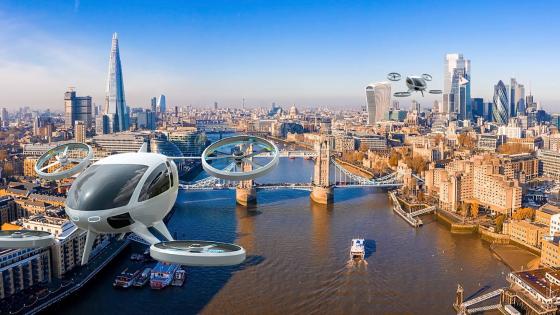
The need for integration into existing urban environments is one of the greatest challenges facing vertiport developers
Understanding the use cases is an important early step in the planning phase. A vertiport site should not be considered without understanding where the passenger demand would come from and why an eVTOL would be used.
A thorough site assessment – before the location is acquired – is the first stage in planning a vertiport and there are a number of considerations involved in assessing a site’s suitability. At Mott MacDonald,we have classified these considerations into a series of different categories that range from regulatory, safety and airspace issues through to physical constraints, environmental factors anddesign guidance.
Regulations and safety
Like any development relating to aircraft, the first consideration has to be regulations, but the urban environment expected for vertiports adds more complexity into the mix. There are two main types of regulations – regional/global regulations related to air operations, and local regulations related to urban planning and building codes. The operating regulations, rules, standards and guidance are implemented by authorities or bodies such as the CAA (the UK’s Civil Aviation Authority), the United States’ Federal Aviation Administration (FAA) or the European Union Aviation Safety Agency (EASA). Local authorities stipulate the urban planning and land use rules that include building regulations and fire codes. Given the high amount of electric power required, specific fire prevention and mitigation regulations will apply.
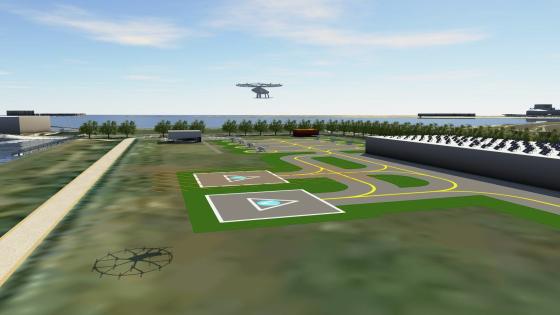
Understanding passenger demand is key to vertiport planning
Safety is key to all aspects of vertiport development, but there are some elements to think about before progressing the planning too far. Items that will determine vertiport design include how passengers will access the eVTOL aircraft on the airfield while staying at a safe distance from moving eVTOLs and ground equipment. This requires knowledge of specific aircraft types, their cool down and venting procedures and locations of the charging and cooling plugs. While a site may want to be vehicle agnostic, the differences across aircraft types without standardisation could rule some out of operations at a vertiport.
Like any airport, the potential site must also be viewed from an emergency procedures perspective. Key questions include: How would the site be accessed by the emergency services? Is there space to locate an element of first response on the site? Plus, if located next to or on water, how does emergency access work with pontoons or boats on site?
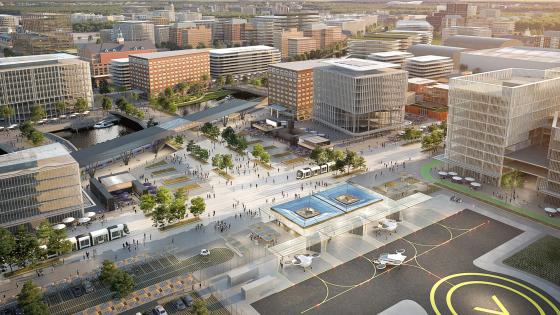
Developers will need to consider not only national, but local planning regulations
Airspace factors
Integrating into the airspace is considered one of the biggest hurdles and potential blockers for a vertiport. Over most cities, the airspace is already designed to allow specific visual flight rules (VFR) operations, or there are specific corridors for helicopter operations. Integrating into an existing airspace design may be easier and quicker than needing to create a new design.
There are already specific no-fly areas that must be avoided, such as airport flight paths, military designated airspace, sensitive infrastructure like embassies or tall buildings. From the eVTOL perspective, the aircraft performance and airborne manoeuvrability must be considered. Other airspace users include birds – their existing migratory, behavioural or feeding flight paths need to be understood and considered.
Local issues
Environmental factors such as changing weather conditions provide other considerations for the planning stage. The prevailing wind direction will determine the take-off and landing direction and orientation of the final approach and take-off (FATO) pad. When analysing the wind direction, it is necessary to understand the speed variations, down drafts, up drafts and how neighbouring buildings will impact and funnel the wind and resulting eddies. Given that winds tend to be stronger higher above the ground, a vertipad on a building roof top will typically be subject to higher winds than a ground-based vertiport. The urban environment also creates invisible heat pockets that can impact aircraft performance.
The specific city location for each vertiport will have its own seasonal weather variations that will impact operations. These include heavy rainfall, thunderstorms, snow, ice, sandstorms and temperature variations, which must be factored in alongside seasonal variations. With climate change, the impacts of extreme weather must also be considered.
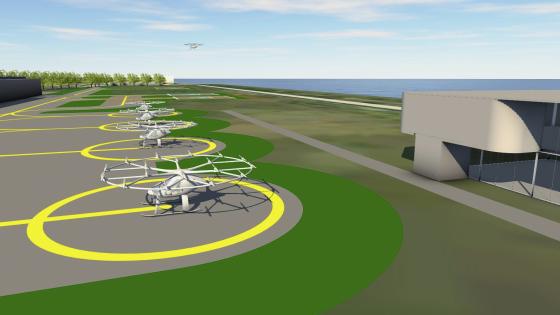
Vertiports will need to provide safe passenger access to eVTOLs
The vertiport also has to integrate into the urban environment and work with existing and future infrastructure, which creates physical constraints that must be planned for. These constraints could be immovable, such as buildings, power lines and trees, which create obstacles for flight operations.
Future land use should also be considered. Given the electricity requirement for eVTOLs, we vertiport developers should also assess the surrounding infrastructure for lightning attraction and conductivity.
Those same utilities that can create constraints are also critical for the planning stage, too. A vertiport will need a significant amount of electrical power to allow fast charging and quick aircraft turnarounds. Connectivity to the electric grid is a high-risk item as the infrastructure required to connect and provide sufficient power could cost more than the vertiport infrastructure alone, as well as taking time to plan and put in place, jeopardising the business case for the site. Without sufficient electric supply, a site may need to consider an energy storage solution. Adequate water supply and drainage are also crucial.
Being a good neighbour
There are some neighbours that can be beneficial for a vertiport development, but there are also some that must be avoided. Proximity to an existing fire station can be beneficial if it has the equipment and training to deal with potential fires at a vertiport as it may mean less site-specific equipment is needed, thus saving space and cost. An aircraft maintenance facility located close by could also save crucial space on-site for operations.
While some neighbours may help serve the vertiport, it is important that the vertiport fits in with other existing neighbours, too. One of the objectives of vertiports is to provide a positive social benefit to local communities, but how flight paths affect those communities is a key consideration. Some countries are considering creating flight paths above highways/motorways to minimise the impact, but design must focus on minimising visual distractions to pilots and road users.
Designing for demand
The business case must stack up for the vertiport, except in rare cases where a wider network might cover the costs of a specific site. It should include initial capital outlay and future operating expenditure. A key early decision is the site cost and whether to buy, lease or operate under a concession. The business case should also consider the revenue model, looking at both aeronautical and non-aeronautical revenue. Non-aeronautical options may support revenue generation through non-flying customers, but may limit space for operations and trade-off aeronautical revenue.
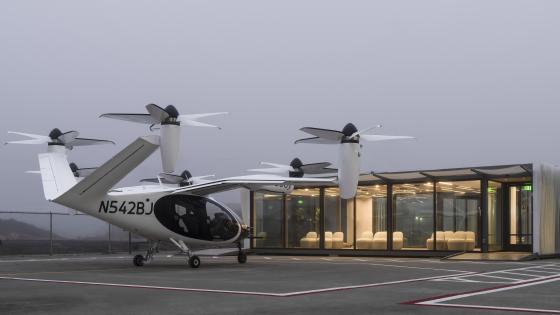
Developers must decide whether to incorporate non-aeronautical revenue generating features Skyports
Understanding passenger demand will feature in the business model, as well as playing a part in determining size and nature of the vertiport facilities. Peak hour demand and a target level of service is used to calculate the size of the facility, while the size of the site will determine the capacity limit. The type of intended service – scheduled or dynamic – and extent of multi-modal integration will be factors that drive demand and will be considerations in the forecast model.
A site should also be considered for its potential to support expansion. Initial demand and operational supply will be low, but as more aircraft come online and more vertiports open and become part of a network, it should be expected that demand will increase and expansion may be required.
Systems and security
All vertiport operations will be underpinned by data and technology connectivity, so consideration of the systems needed is vital. Issues to consider include providing the required bandwidth, the necessary infrastructure such as antenna and transmitters and data security. Infrastructure requirements for vertiport network connectivity and ground to aircraft connectivity need to be considered as part of an onsite or offsite solution.
Like conventional airports, vertiports must be a secure environment for passengers, staff, visitors and the local community, so creating a secure perimeter and segregation between landside and airside is likely to be a given.
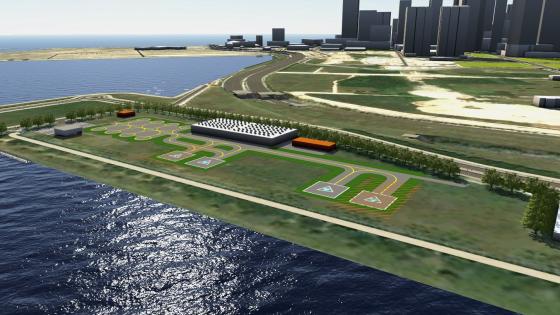
Environmental factors such as changing weather conditions will play a major role in determining where to build vertiports
Similar to airports, eVTOL and vertiport operators must know who their passengers are and, therefore, we can expect some level of passenger and baggage screening in most countries. Not all countries mandate screening for domestic operations, but given the eVTOLs will operate over city centres, operators can anticipate the need for security, which will require space within the vertiport.
Developing the design
Having worked through the considerations needed to find the right location, finally it is time to start work on the design – but there are some important factors to contemplate first.
The final design will be affected by the use case of the vertiport, whether the target types of aircraft and their charging times are known, whether the facility will be shared or used by a single operator, and the type of location – land, water or raised on infrastructure.
Given the urban location, the overall footprint of the site will be limited, so the design must have the right allocation between airfield, terminal and support facilities to back the operation type and targeted level of service. The type of operations, whether passenger, cargo or emergency services, will also influence the design. Ultimately, a facility should not be designed without a detailed grasp of the intended concept of operations.
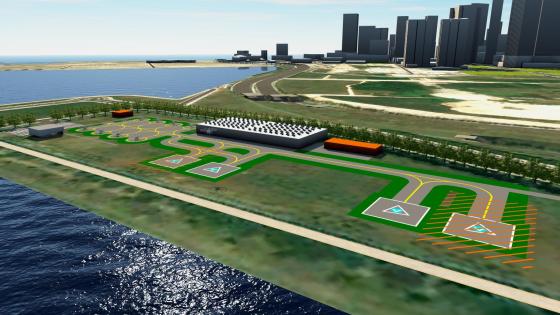
If risks can’t be mitigated, the site is not viable and should not be developed into a vertiport
The approach that Mott MacDonald’s planners and engineers have taken to completing a site assessment ahead of the design phase is based on technical due diligence and creates a red flag report. This report categorises risks as red, amber, green, ideas or questions.
Our experience of assessing vertiport sites so far suggests that, if an urban area is being reviewed for the best location for a vertiport, creating a heat map of each element considered in the technical due diligence is best practice. Through this approach, individual factors can be equally weighted or prioritised and the overlay of the specific heat maps will provide a visual representation of the area and can give an idea of the preferred location for more detailed assessment.
The final advice might sound obvious, but it is critical that the risks can be mitigated and resolved through design and, if they can’t, the site is not viable and should not be developed into a vertiport. We should never build a vertiport in a location simply because we think the area needs a vertiport.
